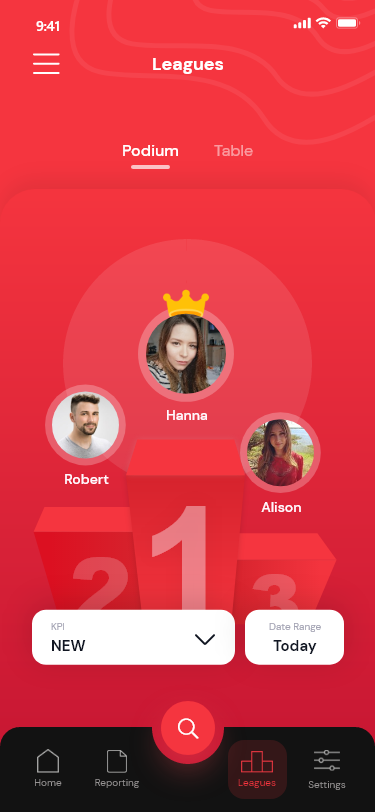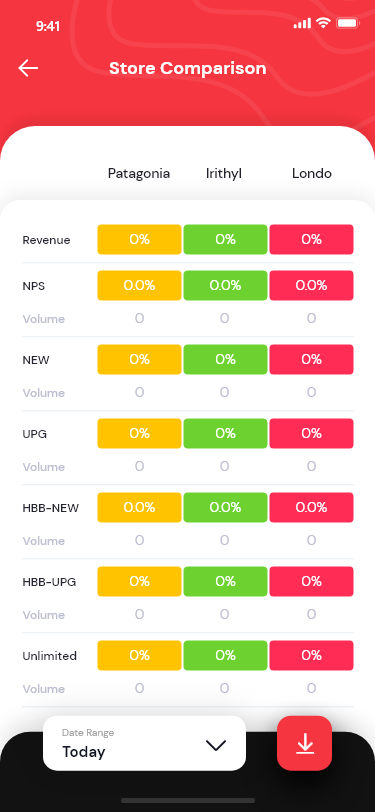Trackio
Sales tracking business intelligence software marketed to Vodafone franchise stores. Providing reconciliation and flexibility for independent businesses operating in one of the country’s fastest-growing telecom franchise programs.



Introduction
Trackio was a bring-your-own-data “BYOD” platform that allowed sales teams to collect then connect their disjointed data sources to the cloud. Once connected, Trackio would provide beautiful and actionable breakdowns through full-stack Web, Android and iOS applications.
The opportunity came about when me and my eventual co-founder who was working in an Edinburgh franchise store had a discussion. He was explaining how the business intelligence software provided to the franchise didn’t meet the flexibility needed for a small business. Even if it did, Vodafone’s cyber security policy didn’t allow franchise stores to access staff and performance data as they were technically a different business.
Since we were 18 and naive, we approached the franchise owner and offered to build a prototype of a new solution that we would build. Fast forward, our 2-week prototype was a success, it might have been a mess under the hood. But to the store manager’s delight, it automated daily tasks that would normally have taken them 2 hours.
After seeing the prototype, a store manager was impressed and saw the potential of taking a full platform to every franchisee in the UK. He later became an investor and our salesperson. What followed was a humbling and important journey that included many triumphs but also mistakes and failures along the way.
The Solution

Point of Sale
Our first hurdle was to provide a way of accurately recording and managing sales without adding workload to the customer advisors and managers. After some testing, we designed and built a touchscreen point of sale terminal that could be installed in the store.
iOS & Android
Once the POS system was self-sufficient and able to record, reconcile and manage stores data to the same degree as Vodafone’s internal tool. We began developing mobile apps for all staff and store owners. Hitting targets is an important aspect of sales. With our POS terminal, we were able to feed real-time data to the mobile apps, previously real-time wasn’t possible and stores would need to manually track sales to see where they stood. This led to clearer communication and higher motivation to hit targets for teams using trackio. The mobile apps were served through web-view containers so only one codebase maintained both iOS and Android.
Web
Using a MySQL database, Laravel backend and Vue.js frontend, a web app was added mainly for franchise owners who wished to use desktop but support for mobile browsers was also provided.


Results
9 Vodafone stores used trackio as their Business Intelligence and reconciliation tool of choice with only 1 day of downtime. As we migrated our cloud services from Google Cloud to AWS, our account manager at AWS noticed a sizable uptick in usage since we were adding more stores to our platform. He suggested we apply for the AWS Activate start-up program. We were awarded $10k from AWS and became an Activate start-up.
As the COVID-19 pandemic hit, we had to quickly pivot our products to match Vodafone’s temporary business model. During this time stores operated as virtual call centres. Within 2 weeks we built and deployed an entirely mobile version of our point-of-sale suite which allowed our clients to continue tracking sales remotely.
In the end, after 1.5 years we decided to close the business. This wasn’t an easy decision and can’t be tied to one single shortcoming. Sometimes it’s better to know when to quit than to carry on. We had reached a point where the platform was in good shape, but we would need more developers, designers and customer support to reach the next level and the revenue and funding needed were simply unattainable.
Key Lessons
Feature Factory
A few months into the project as the business grew and the codebase became more complex, we started to receive lots of feature requests. We would add whatever our clients requested without giving it much thought just to keep them happy, we had become what is known as a feature factory. Cranking out features without measurement, proper handoffs or care for the project’s overall scope. The situation hit a breaking point at around the 6-month mark when the codebase quality dropped to a point where we had to completely rebuild the entire platform. Setting us back months resulted in stress and burnout for the team which could have been avoided with proper foresight.
Technical Debt
Like the feature factory scenario, managing technical debt was a skill learned the hard way. Working in a small team technical debt became common. By creating future problems with shortcuts taken to meet deadlines.
Money Too Early
Although we didn’t raise a huge seed investment. With the benefit of hindsight, this money came too early on when we were still in the ideation phase. This made us less resourceful and would have had a much greater impact later. With only 2 developers we needed to manage Design, Engineering, Project Management, DevOps and even Customer Support.
Planning Over Building
No plan will ever be complete, but the more time spent planning will reduce development hours and help avoid feature factories and technical debt. Scrum, Jira and Toyota Improvement Kata should have been in place from day one.